Less than 24 hours in Santiago
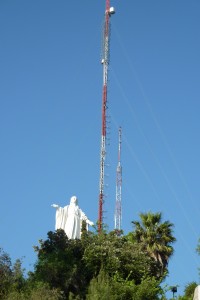
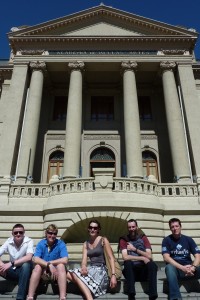
We flew Iberia from London to Madrid and spent 4 hours at the airport before a 14 hour flight to Santiago getting in early in the morning. By midday we were out on the tourist trail taking the underground into the center. We walked around the city center taking in all the old buildings before heading to the zoo and up the mountain that Santiago is built around. Dinner was at a resturant 16 floors up which revolved giving us amazing view over the Andes.
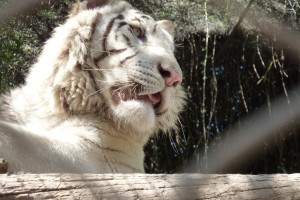
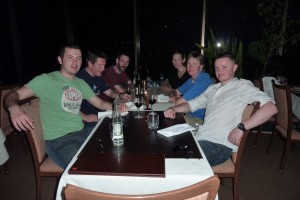
Antarctica glacier retreat creates new carbon dioxide store
This press release is from BAS. I was diving with Lloyd and David (authors of the study) in Oban in September and will be working with them down south this season.
9th November 2009
Large blooms of tiny marine plants called phytoplankton are flourishing in areas of open water left exposed by the recent and rapid melting of ice shelves and glaciers around the Antarctic Peninsula. This remarkable colonisation is having a beneficial impact on climate change. As the blooms die back phytoplankton sinks to the sea-bed where it can store carbon for thousands or millions of years.
Reporting this week in the journal Global Change Biology, scientists from British Antarctic Survey (BAS) estimate that this new natural ‘sink’ is taking an estimated 3.5 million tonnes* of carbon from the ocean and atmosphere each year.
Lead author, Professor Lloyd Peck from BAS says,
“Although this is a small amount of carbon compared to global emissions of greenhouse gases in the atmosphere it is nevertheless an important discovery. It shows nature’s ability to thrive in the face of adversity. We need to factor this natural carbon-absorption into our calculations and models to predict future climate change. So far we don’t know if we will see more events like this around the rest of Antarctica’s coast but it’s something we’ll be keeping a close eye on.”
Professor Peck and his colleagues compared records of coastal glacial retreat with records of the amount of chlorophyll (green plant pigment essential for photosynthesis) in the ocean. They found that over the past 50 years, melting ice has opened up at least 24,000 km2 of new open water (an area similar to the size of Wales) – and this has been colonised by carbon-absorbing phytoplankton. According to the authors this new bloom is the second largest factor acting against climate change so far discovered on Earth (the largest is new forest growth on land in the Arctic).
Professor Peck continues,
“Elsewhere in the world human activity is undermining the ability of oceans and marine ecosystems to capture and store carbon. At present, there is little change in ice shelves and coastal glaciers away from the Antarctic Peninsula, but if more Antarctic ice is lost as a result of climate change then these new blooms have the potential to be a significant biological sink for carbon.”
ENDS
Issued by the British Antarctic Survey Press Office
Author’s contact details:
Professor Lloyd Peck. Tel: +44 (0)1223 221603; email LSPE@bas.ac.uk
Notes for editors:
Stunning broadcast-quality footage and stills of Antarctica, as well as location maps are available from the BAS Press Office as above.
Negative feedback in the cold: ice retreat produces new carbon sinks in Antarctica by Lloyd S. Peck, David K. A. Barnes, Alison J Cook, Andrew H Fleming and Andrew Clarke is published online this month in the journal Global Change Biology.
Phytoplankton use chlorophyll and other pigments to absorb sunlight for photosynthesis, and when they grow in large numbers, they change the way the ocean surface reflects sunlight. They are eaten by krill and are the foundation of the ocean food web. Animals such as sponges and corals also consume phytoplankton. They can live for decades to hundreds of years and when they die they form mats on the seabed that are buried under sedimentation.
*The 3.5 million tonnes of carbon taken from the ocean and atmosphere is equivalent to 12.8 million tonnes of CO2.
Global carbon dioxide emissions from fossil fuel combustion and land use change reached 8.7 billion tonnes of carbon in 2007.
Sea ice loss and retreat of coastal glaciers on the Antarctic Peninsula were studied using historical accounts, aerial photographs and satellite images. This shows that seven of the major ice shelves and 87% of the 244 marine glaciers have retreated over the past 50 years.
The 24,000 km2 of new open water is approximately the size of Vermont, New Hampshire, New Jersey, Belize or Israel.
A glacier — is a ‘river of ice’ that is fed by the accumulation of snow. Glaciers drain ice from the mountains to lower levels, where the ice either melts, breaks away into the sea as icebergs, or feeds into an ice shelf.
Ice sheet — is the huge mass of ice, up to 4km thick that covers bedrock in Antarctica or Greenland. It flows from the centre of the continent towards the coast where it feeds ice shelves.
Ice shelf — is the floating extension of the grounded ice sheet. It is composed of freshwater ice that originally fell as snow, either in situ or inland and brought to the ice shelf by glaciers. As they are already floating, any disintegration will have no impact on sea level. Sea level will rise only if the ice held back by the ice shelf flows more quickly onto the sea.
British Antarctic Survey (BAS), a component of the Natural Environment Research Council, delivers world-leading interdisciplinary research in the Polar Regions. Its skilled science and support staff based in Cambridge, Antarctica and the Arctic, work together to deliver research that underpins a productive economy and contributes to a sustainable world. Its numerous national and international collaborations, leadership role in Antarctic affairs and excellent infrastructure help ensure that the UK maintains a world leading position. BAS has over 450 staff and operates five research stations, two Royal Research Ships and five aircraft in and around Antarctica.
The importance of packing!
As I pack my one bag to take to Antarctica I not only have to comply with the 23kg baggage allowance but I also need to make sure everything is clean and that I am not inadvertently carrying non native species to Antarctica.
Jill the Head of Building Section at BAS was going to the Falkland last weekend on the MOD flight for a quick trip so very kindly took my skis and ski boots down saving me 120 Euros in excess baggage allowance on Lan Chile. I am looking forwad to getting some post work evening ski trips in.
My bag contains some clothing to compliment what BAS has already given me for work including some base layer socks (thin ones) and gloves. I also have a nice new mid layer for diving in and under my boat suit it is like wearing a sleeping bag toasty and warm… Lots of handwarmers including some ones that you recharge by boiling, my new SLR camera with waterproof case, deodrant, conditioner, after work clothes etc. I am hoping I have pretty much everything I will need.
Life at the Poles
People keep on asking me what there is to see underwater in Antarctica. Seeing as I have dove yet I talked to the people I will be working with. When I went to Oban for dive week I dove with David Barnes one of the BAS scientists who will be coming down to Rothera. I will be taking him out on the boat so he can continue his scientific research. I came across an interesting article in which David talks about inventorying life at the poles.
Dr Barnes told BBC News: “There is a widely held belief that life is very rich in the tropics and decreases through temperate areas, through to polar regions, which are thought to be barren.
“That is partly because we see life from the land point of view – and when we see the Arctic and Antarctic, we just see ice.
“But below the surface of the sea, it is an incredibly rich environment, and diving there is a bit like diving on a coral reef.”
Enjoy the full article here.
Waste Removal
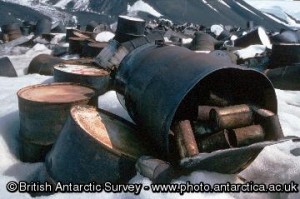
Antarctica is the largest wilderness on Earth with no permanent human inhabitants. However, the continent hosts 10,000 scientists and support staff in the summer. Removal of human created waste is a very important necessity to stop our impact on the pristine wilderness. To comply with the treaty we are given oil spill response training, waste management training etc. Check out BAS’s website about this important issue.
Getting ready…
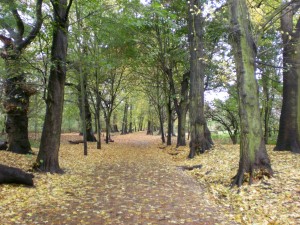
I am leaving to go south in 10 days and it is fall/winter in the UK the leaves are looking beautiful. Last week after crane driving I spent the week working on my fathers boat, cleaning out the attic in my parents house, seeing friends, writing birthday cards, sorting out christmas cards and presents. This week I am visiting friends some more helping my mum with a Guy Fawkes party, having my hair cut (I have been dared by a friend to shave it all off!), packing my 23kg allowance (a hard thing to do) and working some more on Dad’s boat. So just a lot of mundane running around chores! Soon enough I will be on the plane headed to Madrid then Santiago, Falklands and Rothera.
Have a great week.
Ash
 This is a picture taken on Hampstead Heath where I went for a walk with a friend.
This is a picture taken on Hampstead Heath where I went for a walk with a friend.
Other Bases of Antarctica and the Treaty
Answering some more questions I have received!
There are many other bases in Antarctica however, we don’t get together and have tea and biscuits! The other stations are quite a distance away.
Antarctica has been set aside as a scientific preserve for scientific investigation there is to be no military activity on the continent. Antarctica has no “permanent population” and hence no citizenship or government. However, theTreaty which was signed by 47 countries has 21 Articles which regulates activities by the signators on the continent.
Crane Driving
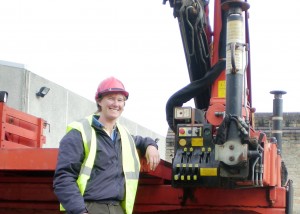 For the last two days I was up in Cambridge at BAS learning to drive the cranes they have mounted on the snow cats. The one I was learning on is actually the smallest one they have. It is a bit like I imagine driving a tank is like – slow and hard to maneouvre. Instead of a steering wheel there are two levers. It was such fun playing around with the machine learning to sling things and move them about the yard. The reason I am being taught this is so that I can load the boats in the water as the slipway was taken out by a storm at Rothera. At Halley which has no boating they take about 2 months to unload the cargo ship and use these machines everyday. Oh and I get a license that looks like your drivers license to allow me to drive them anywhere I want!
For the last two days I was up in Cambridge at BAS learning to drive the cranes they have mounted on the snow cats. The one I was learning on is actually the smallest one they have. It is a bit like I imagine driving a tank is like – slow and hard to maneouvre. Instead of a steering wheel there are two levers. It was such fun playing around with the machine learning to sling things and move them about the yard. The reason I am being taught this is so that I can load the boats in the water as the slipway was taken out by a storm at Rothera. At Halley which has no boating they take about 2 months to unload the cargo ship and use these machines everyday. Oh and I get a license that looks like your drivers license to allow me to drive them anywhere I want!
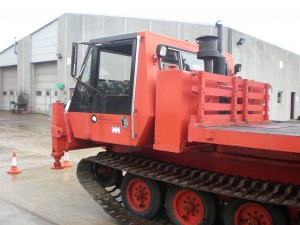
Old Days
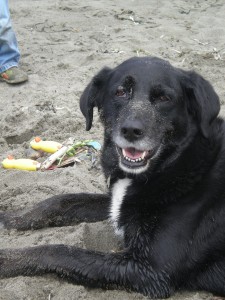 One of the things I am missing and will continue to miss is ‘my’ dog Draeger who is a beautiful Lab Collie mix. I really wish we were able to have dog teams down on base unfortunately they were removed from base in 1994 see the below movie about them.
One of the things I am missing and will continue to miss is ‘my’ dog Draeger who is a beautiful Lab Collie mix. I really wish we were able to have dog teams down on base unfortunately they were removed from base in 1994 see the below movie about them.

